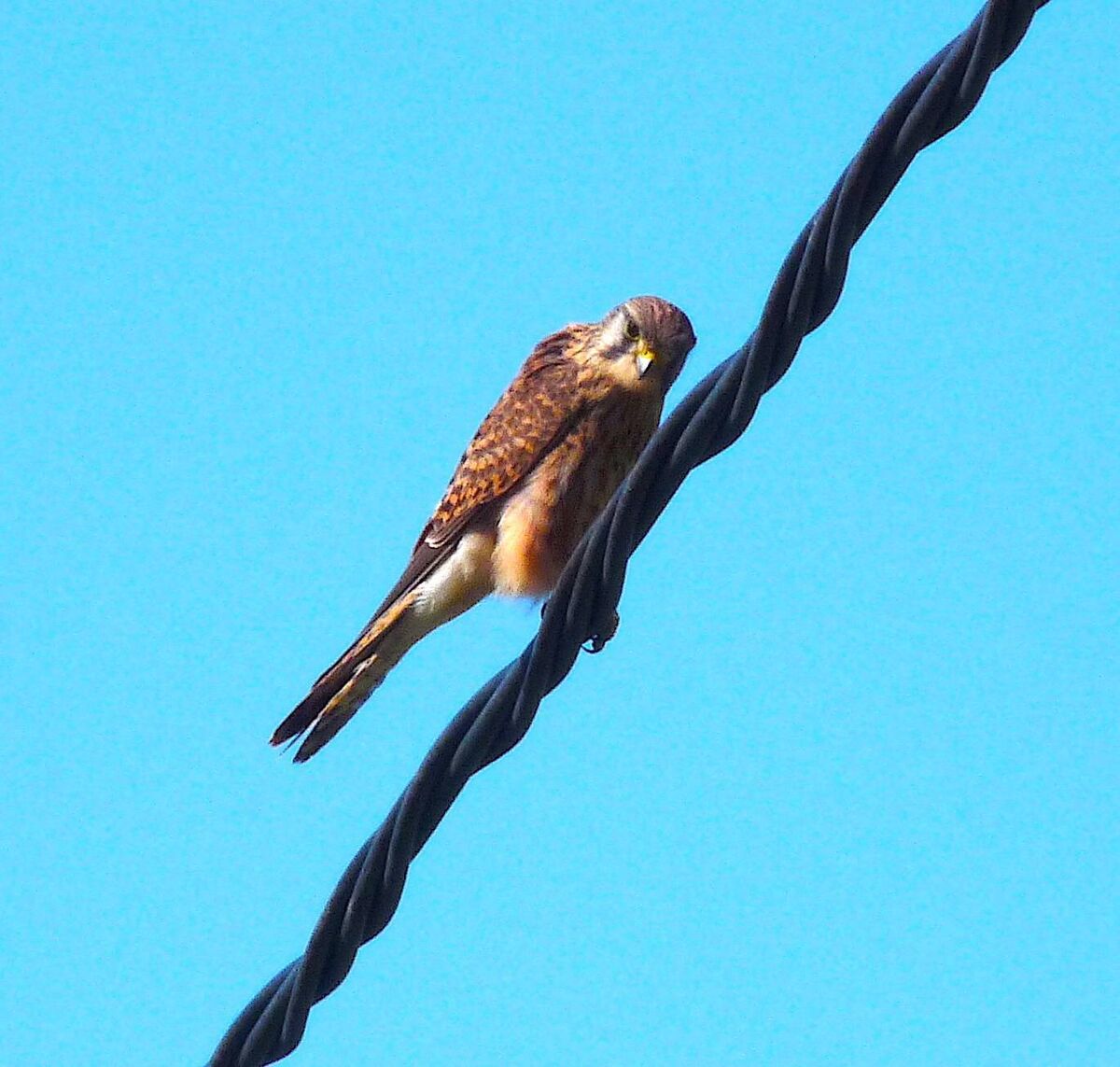Nature calibrated to act by internal clock

Artisan honey production has become very popular with farmers in La Gomera. No wonder – even cactus flowers are blooming and attracting honey bees.
IT WILL be evident to most of my readers than flora and fauna work, as much as possible, to schedule, and these schedules have to do with the natural elements of light, temperature and air movement.
Every day, at 3pm, when I take a break for a late lunch, a blackbird starts singing in the yard at a volume that would, as the expression goes, “blow your head off”.
Between blasts of song, a background chorus of chiff-chaffs and, sometimes, goldfinches can be heard, subdued voices compared with the maestro who leaves little space for them, other than when it has to stop to draw breath.
Also at a reliable time of day, a 3cm-long red-and-black potter-wasp flies back and forth to a layer of plant debris under a dripping tap. Potter-wasps make extraordinarily beautiful nests from clay mixed with plant matter they have masticated.
The perfection of these orbs, complete with spouts like antique wine pitchers, has to be seen to be believed.
A human potter could hardly do better for the symmetrical rotundity of the base and the smoothness of its surface, plus the perfection of the spout.
The wasp lays eggs inside the brood nest, inserts anaesthetised caterpillars (fresh food for the larvae) through the spout, and seals it. Now, our yard potter-wasp, after a month’s labour, comes no longer, its work, presumably, being complete.

Shearwaters nightly tour the lights of the pier crying like a nursery of babies. A young bird sometimes hits a light or building. Cared for by the night-watch, if it survives, it is released.
Every morning, when I open the bedroom curtains, I see the same kestrel sitting on a cable between lamp posts. Its perch is finely calibrated.
From there, it can survey the widest area of ground below, now bare since the banana trees have been removed and the avocado, mango or papaya trees planned to succeed them are not yet planted.
This bird is distinctive and easily identified because it is melanistic, that is to say, very dark, especially its head, with the eyes lost in the darkness.
A monarch butterfly patrols the yard at intervals. As big as a chiff-chaff (of which there are dozens among the fruit trees) but more easily mistaken for a day-flying bat, it is twice the size of the dozens of cabbage white butterflies fluttering over every clump of flowering weeds and garden flowers.
Now that it is spring, flowers and butterflies (99 out of every 100 being small whites) are everywhere.
Great breaks of purple bougainvillea, and white flowers and yellow flowers and blue flowers, appear on dry slopes among rocks and rubble fallen from the cliffs above. Where they get the water is a mystery, but they do.
The Canary Islands are, of course, famous for the extravagance of flowers at all time of the year, and for the dozens of varieties of fruit, wild and cultivated, and for how fast things grow. Lettuces set as plantings produce salad leaves in two weeks.
Spuds now, in March, planted in serried ranks in plots big and small, are already a foot tall.
Papayas, bright yellow and as big as rugby balls, grow in dense clusters atop trees usually no more than 3m tall. How they can support their weight is extraordinary.
Since we first came here decades ago, we’ve noticed how beehives have dramatically increased in number and, often, are sited in places only a bee could get to. Patently, the farmers must be able to reach them too, but what a climb they face to harvest the honey, in hives above near-vertical ascents of 100m.
Farming here requires strong legs, and not all legs still smoothly function when their owners reach retirement age plus 10.
The division of inherited land into scraps sited all over the valley, at all levels, makes the work more difficult.
Some plots are no bigger than the mattress of a double bed. It’s rare to see any piece of ground under cultivation in the middle valley bigger than a tenth of an acre.
‘Herrencias’ come from father’s side, mother’s side, from uncles and aunts. Inheritance of water rights is as important as that of land.
As for the sea, that’s anybody’s, but strict rules apply to fishing close inshore, often designated marine conservation areas, and very few licences are issued.
I saw a young osprey invade a group of gulls fluttering over the surface about 500m out, the other morning.
They’d obviously detected fish and seeing them dancing on the surface as they fed, the young osprey decided to join them. The gulls ganged up on him and drove him off. There are about 14 active osprey nests around the coast.

Unlimited access. Half the price.
Try unlimited access from only €1.50 a week
Already a subscriber? Sign in
CONNECT WITH US TODAY
Be the first to know the latest news and updates









